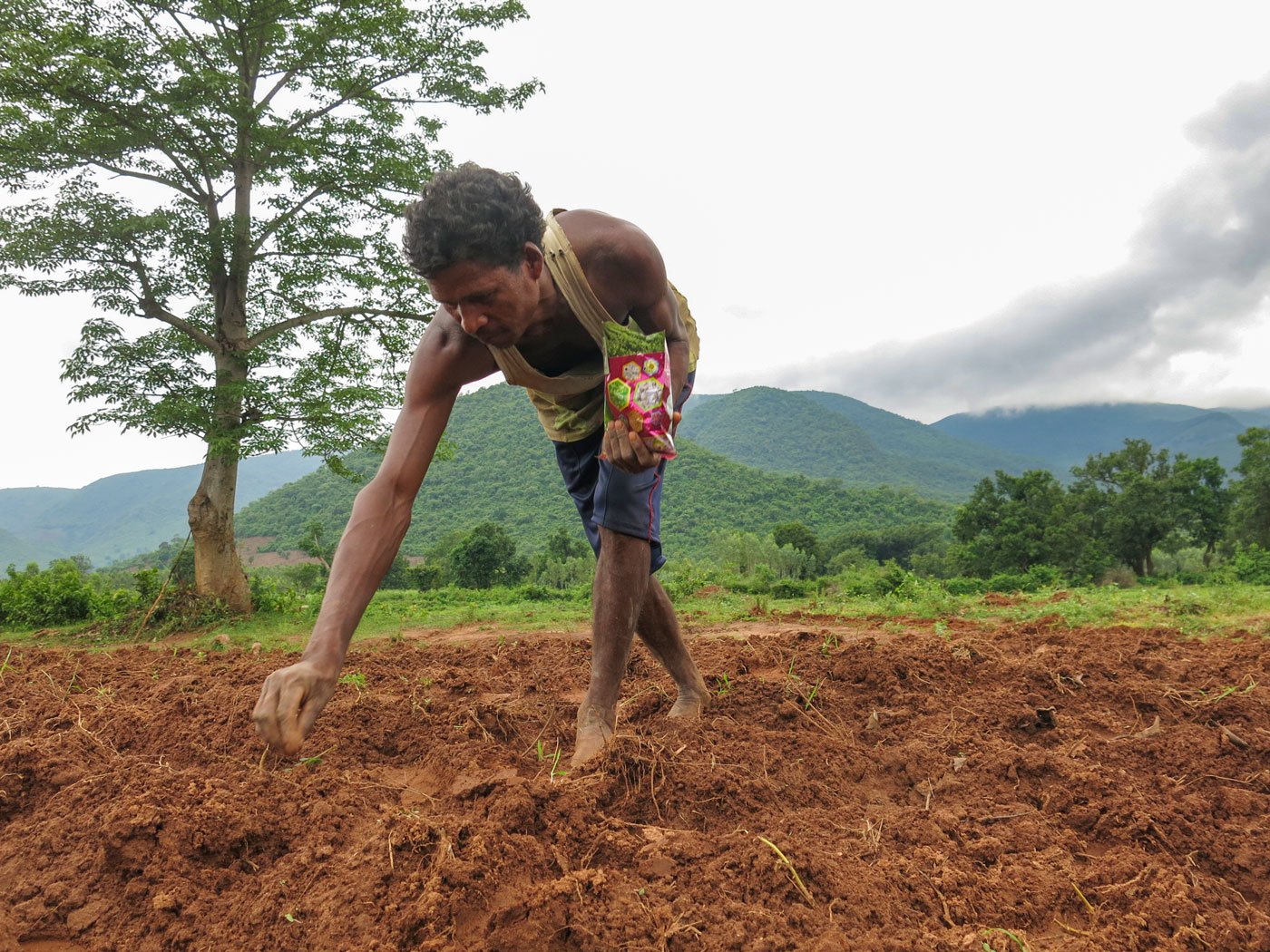by CHITRAGANDA CHOUDHURY and ANIKET AGA

“Everybody is doing it. So we are too,” said Rupa Pirikaka, somewhat uncertainly.
‘It’ is genetically modified (GM) Bt cotton seeds, now easily bought at the local market, or even in one’s own village. ‘Everybody’ is countless other farmers like her in the village of and across the rest of south-western Odisha’s Rayagada district.
“They are getting money in their hands,” she says.
Pirikaka is a Kondh Adivasi farmer in her 40s. Every year, for over two decades, she would prepare a hill slope for dongar chaas – literally, ‘mountain farming’ (shifting cultivation). Following traditions honed by the region’s farmers over centuries, Pirikaka would sow mixed plots of heirloom seeds which she had saved from family harvests the previous year. These would yield a basket of food crops: millets like mandia and kangu, pulses like pigeon pea and black gram, as well as traditional varieties of long beans, niger seeds and sesame.
This July, for the first time, Pirikaka switched to Bt cotton. That was the time we met her, sowing the dark pink, chemical-doused seeds on a hill slope at her village in Bishamakatak block. The penetration of cotton into the shifting cultivation practices of the Adivasis was striking, making us ask her about this switch.
“Other crops like turmeric also give money,” admits Pirikaka. “But nobody is doing that. Everyone is leaving mandia [millet]… and going after cotton.”
The area under cotton in Rayagada district has risen by over 5,200 per cent in barely 16 years. Official data show just 1,631 acres under cotton in 2002-03. In 2018-19 that was 86,907 acres, according to the district agriculture office.
Rayagada, with close to 1 million people, is a part of the Koraput region, one of the world’s great biodiversity hotspots, and a historical area of rice diversification. A 1959 survey of the Central Rice Research Institute showed the region still had over 1,700 rice varieties at the time. It’s down to around 200 now. Some researchers believe it to be a birthplace of rice cultivation.
Rural India Online for more
